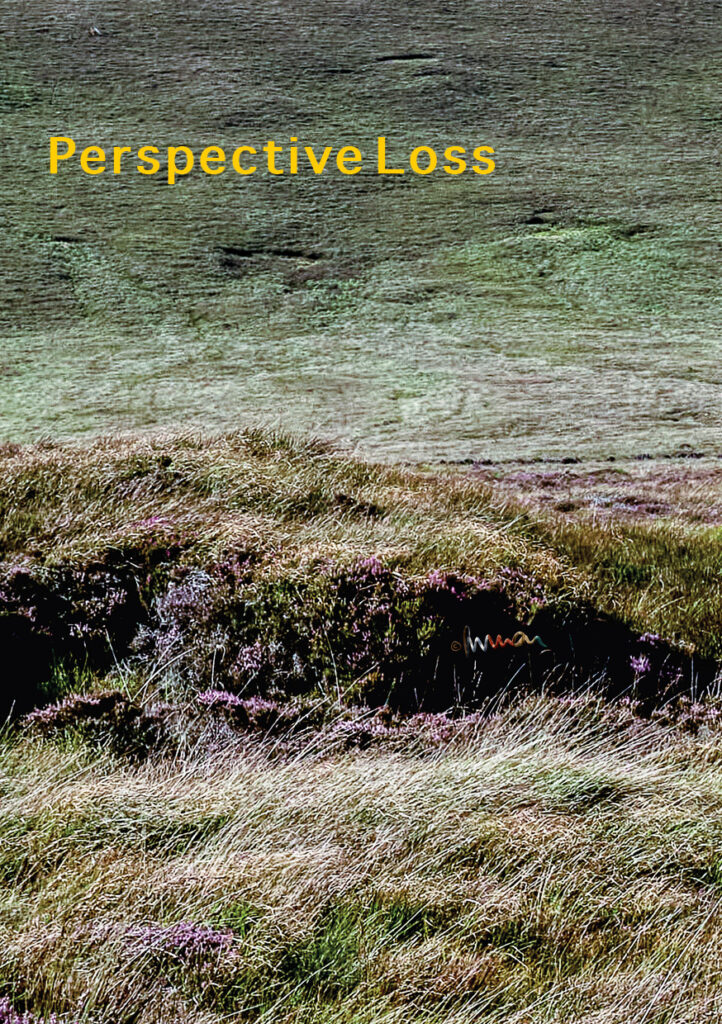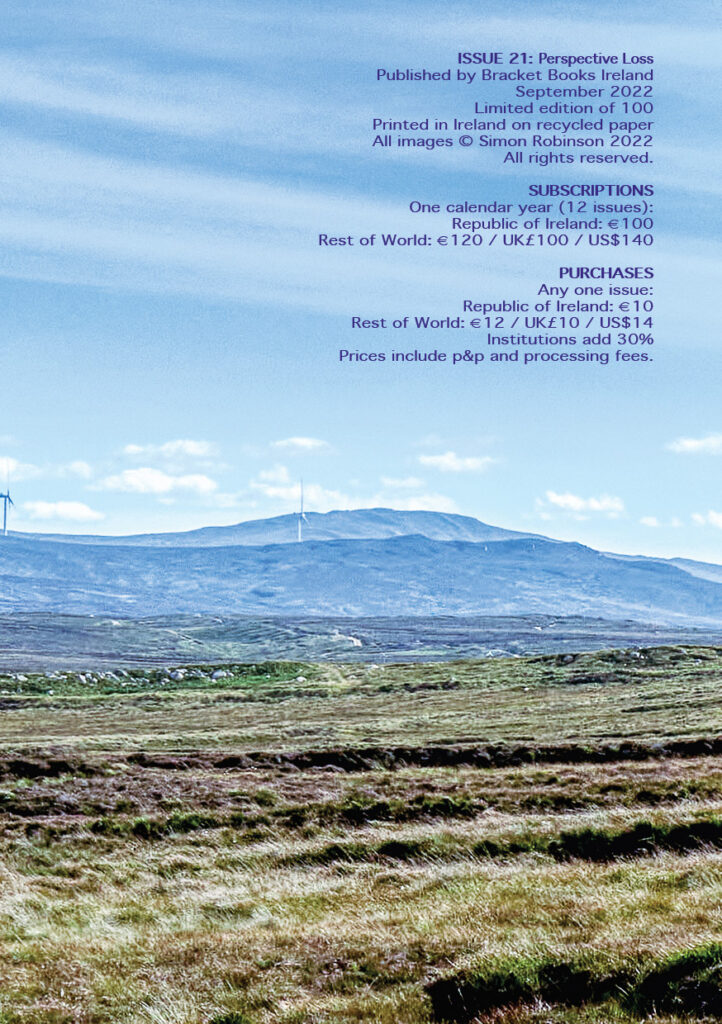Your experience of this chapbook starts with looking. Perhaps you’ll find more geographic detail than can be comprehended, perhaps less image resolution than you’d like.


Available now from Bracket Books Ireland at outlets like FabHappy or WalkingCommentary.
My experience of these images also started with looking and I certainly saw more than I could comprehend. I was standing on a 20th century sealed roadway that runs across an ice-age derived bog that blankets an unseen bedrock of granite, itself a pluton of the Donegal Batholith that’s probably 400 million years old. And I was looking over towards the town of Gortahok whose bedrock of metasediments is twice that age.
The images herein are contiguous selections from that geological timescape, presented in seventeen parts. Think of it as a polyptych panorama without content awareness. Consider it as a hymn1 in 50 megapixels.
This is a bookscape that powers eastwards from turf on the Bloody Foreland towards modern wind turbines on distant hills. The turning pages pan over settlements still energised by hydrocarbons, spiked with telegraph poles in service to gabled houses that might be permanent homes (or not).
It’s a landscape comprised of islands, mountains and beaches to which we have given names like Tory and Inishboffin, Muckish and Errigal, Magheraroarty and Tramore.
There’s the seascape of the Atlantic Ocean in which Tory Sound and Ballyness Bay are exploitable from the townscapes such as Gortahok, Falcarragh and Meenlaragh.
And it’s a layered virtual mapscape. There are unseen arbitrary assignments of townland extents like Killult and Drumnatinn within which religion has formed parishes like Tullaghobegly and Raymunterdoney. Conquest probably named the Barony of Kilmacrenan. You may have been taught by litany that these places are in the county of Donegal within the province of Ulster, itself divided between two nations on the island of Ireland, outboard of the continent of Europe. It’s a shared world!
Struggles of culture and language persist among the fields and homes captured here. Seo íomhá de Ghaeltacht le ainmneacha “Cearta” ar nós Tóraigh, Machaire Rabhartaigh, Gort an Choirce, An Fál Carrach, Ráith, Tulacha Beigile, Cill Mhic Réanáin agus Dún na nGall.
1 After Geoff Dyer’s 2015 essay ‘Andreas Gursky’ in See/Saw (2021).
‘I was brought up
within sight of a mountain,
within hearing of the sea,
on the edge of a village,
in the tension between my parents’
Moya Cannon
AND WHERE WERE YOU BROUGHT UP?
Poetry Ireland Review Issue 137 August 2022
Quoted with permission
The Bracket Books chapbooks are available for online purchase through FabHappy and TheUpliftKit but perhaps you’d prefer to enquire here. They’re being issued by the calendar month, each edition in 2022 limited to 100 copies, each copy uniquely numbered and posted at the end of each month.
Click PRICING for 2022 series subscriptions and single edition purchases.

Leave a Reply